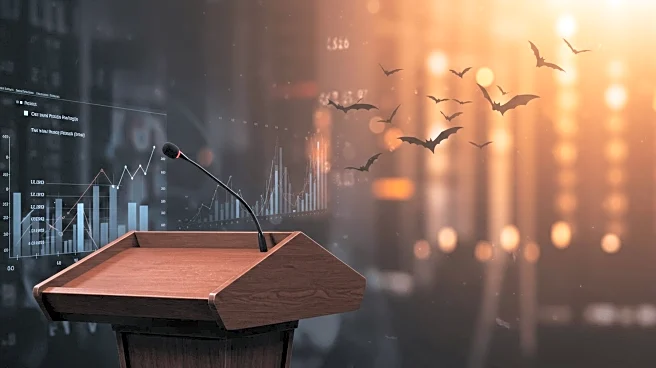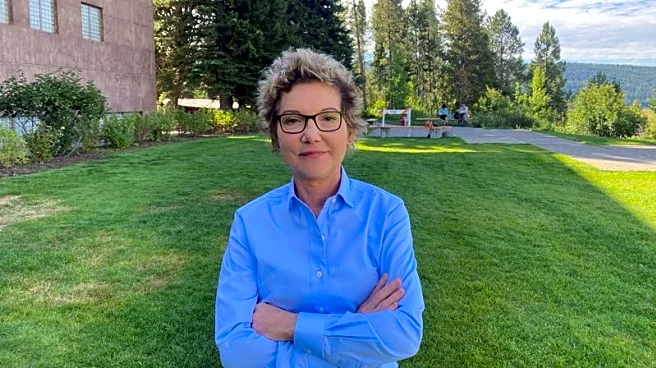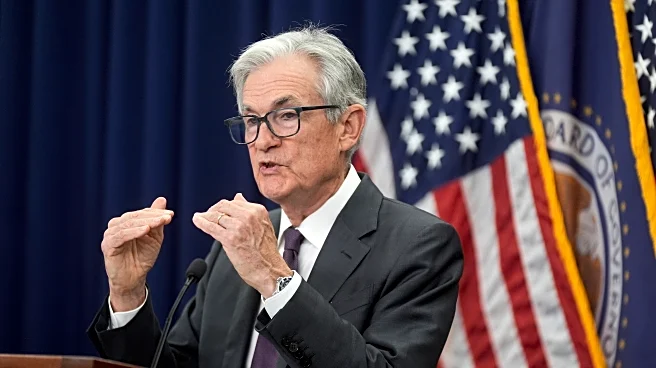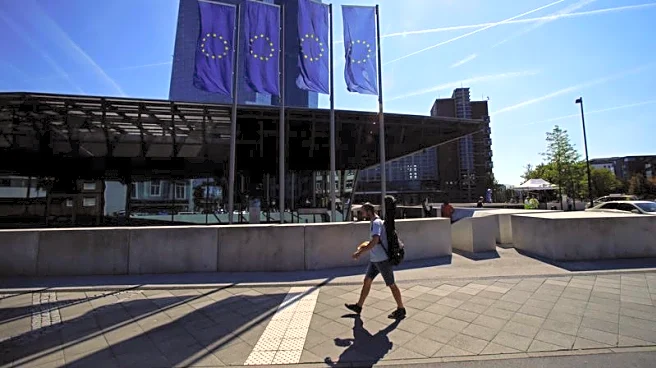What's Happening?
The Federal Reserve Bank of Kansas City is hosting its annual invitation-only conference at a lodge in Jackson Hole, Wyoming, where central bankers, government officials, and academics gather to discuss key economic issues. This year, the event is marked by an unusual challenge: a bat infestation. The bats were first encountered by guests on June 2, leading to the closure of affected cabins for the season. The Wyoming Department of Health and the Centers for Disease Control and Prevention have contacted hundreds of people from 38 states who stayed in the affected rooms between May 15 and July 27. Despite the bat issue, the conference continues, with notable attendees such as Christine Lagarde, the European Central Bank chief, confirmed to speak.
Why It's Important?
The Jackson Hole conference is a significant event for global economic policy discussions, often influencing monetary policy decisions worldwide. The presence of high-profile figures like Christine Lagarde underscores the importance of the forum in shaping economic strategies. The bat infestation, while a logistical challenge, highlights the unexpected hurdles that can impact such high-level gatherings. The health concerns raised by the infestation could affect the participation and focus of attendees, potentially influencing the outcomes of discussions on critical topics such as interest rates and inflation targets.
What's Next?
The conference will proceed with its scheduled discussions, focusing on key economic issues such as interest rates and inflation. The Federal Reserve and other central banks may use insights from the event to guide future policy decisions. The Wyoming Department of Health and the CDC will continue monitoring the situation to ensure the safety of attendees. The closure of affected cabins will remain in place for the season, and further health advisories may be issued if necessary.
Beyond the Headlines
The bat infestation at the Jackson Hole conference highlights broader issues of environmental and wildlife management in areas hosting large events. It raises questions about the preparedness of venues to handle unexpected natural occurrences and the impact on public health. The incident may prompt organizers to consider more robust contingency plans for future events, ensuring minimal disruption to critical economic discussions.













